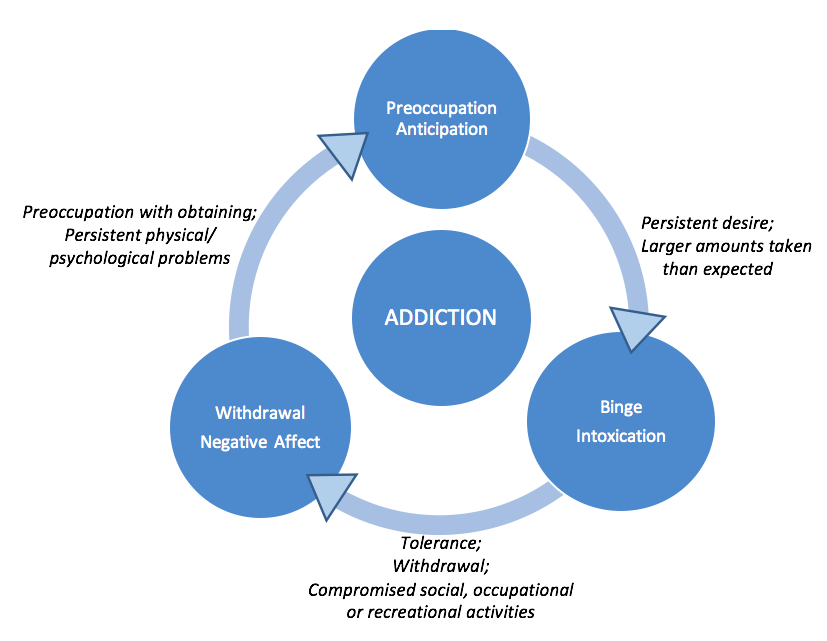Module 2: Introducing Theories of Addiction
Ch. 1: Substance Use & Misuse versus Substance Use Disorders
In the first 4 chapters, we look at substance use disorders from a social work point-of-view. You may be familiar with terms like alcoholism, drug addiction, and alcohol or other drug dependence—these terms all relate to the focus of this introductory reading. You will read about:
- current thinking about the nature of substance use disorders;
- criteria currently applied in the United States for distinguishing between substance use, substance misuse, and substance use disorders;
- key epidemiology trends related specifically to substance use disorders;
- a general framework for classifying theories about the origins and causes of substance use disorders; and,
- key terms used in the field of substance use disorders and addiction.
Substance Use & Misuse versus Substance Use Disorders
There exist many different ways of defining and thinking about substance use disorders (SUDs). Alcohol use disorders (AUDs) represent a special class of SUDs. From a public health perspective, substance use disorders (SUDs) have much in common with other chronic, relapsing diseases like diabetes or high blood pressure. Chronic diseases with a strong behavioral health component may require a lifelong, ongoing commitment to manage and control them. This is in contrast to diseases caused by cancer, bacteria, viruses, or other microbes for which a medical cure exists. Many professionals consider substance use disorders to be naturally progressive in nature. In other words, without treatment, these diseases often get worse over time.
Koob and Simon (2009) characterized addiction in terms of a disorder that escalates from occasional, limited, controlled use of a substance to compulsive use. In addition, their conceptual framework for understanding addiction includes the experience of negative emotional states (anxiety, irritability, and other negative feelings) when unable to access the substance to which a person is addicted. They described three stages in the process of addiction; Figure 1 depicts how these three stages described by Koob and Simon (2009) are interrelated and can become a repeating cycle of addiction over time with increasing levels and persistence of psychological and physical problems.
Figure 1. Diagram depicting the addiction cycle, using DSM-IV criteria (adapted from Koob & Simon, 2009)

This chronic disease perspective is the subject of some debate. For example, there exists plenty of evidence to show that a chronic, relapsing, progressive pattern is true for many individuals, usually those experiencing the most severe forms of addiction. However, this pattern does not hold true for everyone diagnosed with a substance use disorder. Some people can overcome the problem on their own, without formal treatment; many people with milder, earlier-stage substance use disorders do not relapse and their substance-related problems do not progress (Cunningham & McCambridge, 2012). On the other hand, some professionals argue that these individuals may not have been experiencing a true substance use disorder, despite their patterns of serious substance misuse. You can see the complexity of the issues involved. One implication for the high degree of individual variability in the trajectory of substance use disorders is that it seems unwise to rely on a uniform treatment approach for all individuals diagnosed with a substance use disorder.
One factor involved in distinguishing between substance use and substance misuse involves looking at the various ways in which a person’s use of substances may become problematic use. For example, substance use may:
- present a legal problem;
- contribute to other problem behaviors, such as committing crimes to obtain substances, acts of aggression while under the influence, or engaging in risky activities (like driving a vehicle while under the influence or engaging in unsafe sex practices);
- have a negative impact on social relationships with friends, families, or coworkers;
- lead to failure in fulfilling important social roles or responsibilities, including parenting;
- have a negative impact on a person’s cognitive performance (such as perception, thinking, learning, problem solving, memory, and reaction time);
- have a negative impact on a person’s physical or mental health; and,
- lead to development of a diagnosable substance use disorder.

It is also important note when an individual’s use of substances becomes a problem at the level of family, workplace, community, or even globally. An individual’s decision to use substances has a ripple effect on the rest of the family system. This decision can affect many family roles and responsibilities, having major implications for relationships with all of a person’s significant others: parents, brothers and sisters, children, partners, friends, and kin from the extended family. It also has implications for neighborhoods where the substances are distributed and used. For example, the threat of weapons, property crimes, and community violence often accompany the distribution of illegal substances—supported by illegal drug use. Illegal drug use and trade may fund organized crime, gangs, and terrorist networks in any of a number of countries, not just in the United States—the problem has global ramifications. There also is a significant ripple effect on health, mental health, and criminal justice systems when a person gets into trouble by using substances.
The substances used need not be illegal for there to be significant negative consequences. You can probably think of instances where negative consequences were associated with someone drinking alcohol. For example, someone who has had too much alcohol to drink might be more likely to get into fights, fail to do what was expected at work or at home, or make poor decisions about potentially risky behaviors (such as driving while impaired or engaging in unsafe sex). For some vulnerable individuals, taking substances may induce or make worse existing psychiatric problems, such as a psychotic, bipolar, depressive, anxiety, obsessive-compulsive, sleep, sexual, or neurocognitive disorder. At what point does alcohol or other substance use become problematic? Sometimes, it is when life problems result from substance use. Other times, alcohol or other substance use only becomes problematic when a person develops a substance use disorder. The next chapter outlines the features of substance use disorders, which is where the concept of addiction fits.
